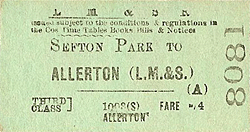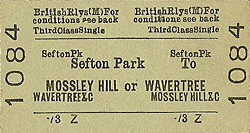|
Notes: Sefton Park station was located on the London & North Western Railway (LNWR) main line from Liverpool Lime Street to Weaver Junction. The line on which Sefton Park stood had originally been an extension of the St Helens Canal & Railway Company (SHC&RC) Garston and Warrington railway from a junction on that line at Speke to Edge Hill where it made connection with the 1830 Liverpool and Manchester line. The SHC&RC company opened the extension line on 15 February 1864 and it was absorbed into the LNWR on 29 July 1864. The LNWR were interested in the SHC&RC lines as they needed sections of them to create a shortened route between Liverpool and London via a bridge over the River Mersey at Runcorn Gap. The bridge opened on 1 February 1869 and two months later express passenger services were routed over it.
Due to the levels of traffic operating over the line by the 1880s the LNWR quadrupled it from Edge Hill to Ditton Junctions the work being complete by 13 July 1891.
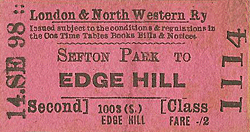 |
Suburbs had grown alongside the line since it had opened and to serve the areas of housing in the Smithdown Lane area the LNWR opened Sefton Park station on 1 June 1892. It was located on the south side of Smithdown Lane on an embankment. The historic Liverpool park from which the station took its name was a short distance to the west. The line passed |
over Smithdown Lane on a bridge and adjacent to it on the west side of the line a street level booking office was provided. Access to the station was via the single storey booking office which had a set of steps behind it that led up to the down slow line (Liverpool direction) platform. As the line was quadruple Sefton Park had four platforms two of them being part of an island. A subway ran from the booking office to the east side of the line giving access to the island platform and the up fast line (London direction) platform. The island platform served the down fast line and the up slow line.
Waiting facilities and public toilets were provided on the platforms. They were single storey timber buildings built to the LNWR's own style.
When Sefton Park station opened the most frequent service was that which ran between Liverpool Lime Street and Garston Dock. It also had trains to Chester, Manchester, Stockport and Warrington. In December 1895 there were 23 up and 22 down services Monday-to-Friday as shown in the table below. On Saturdays there was one less down train and there were no trains on Sundays.
| Up Trains December 1895 |
Destination |
Down Trains December 1895 |
Destination |
| 8.32am |
Warrington Arpley |
8.23am |
Liverpool Lime Street |
| 9.05am |
Garston Dock |
8.42am |
Liverpool Lime Street |
| 10.00am |
Garston Dock |
8.48am |
Liverpool Lime Street |
| 10.07am |
Manchester London Road |
8.51am |
Liverpool Lime Street |
| 11.00am |
Garston Dock |
9.17am |
Liverpool Lime Street |
| 12.25pm |
Garston Dock |
9.42am |
Liverpool Lime Street |
| 1.42pm |
Warrington Bank Quay |
10.07am |
Liverpool Lime Street |
| 2.52pm |
Manchester London Road |
12.12pm |
Liverpool Lime Street |
| 3.00pm |
Garston Dock |
1.05pm |
Liverpool Lime Street |
| 4.00pm |
Garston Dock |
1.17pm |
Liverpool Lime Street |
| 4.32pm |
Stockport |
2.17pm |
Liverpool Lime Street |
| 5.05pm |
Garston Dock |
4.12pm |
Liverpool Lime Street |
| 5.32pm |
Manchester London Road |
4.17pm |
Liverpool Lime Street |
| 5.55pm |
Garston Dock |
5.17pm |
Liverpool Lime Street |
| 6.17pm |
Manchester London Road |
5.51pm |
Liverpool Lime Street |
| 6.30pm |
Garston Dock |
6.26pm (Saturdays Excepted ) |
Liverpool Lime Street |
| 7.00pm |
Garston Dock |
7.02pm |
Liverpool Lime Street |
| 7.25pm |
Chester |
7.27pm |
Liverpool Lime Street |
| 8.00pm |
Garston Dock |
7.43pm |
Liverpool Lime Street |
| 8.22pm |
Manchester London Road |
8.44pm |
Liverpool Lime Street |
| 9.29pm |
Garston Dock |
10.30pm |
Liverpool Lime Street |
| 10.40pm |
Garston Dock |
11.17pm |
Liverpool Lime Street |
| 11.22pm |
Chester |
|
|
When Sefton Park opened it had little in the way of competition. Within eight years that was to change when an electric tramway was opened along Smithdown Lane by the Liverpool Corporation. The tramway provided a convenient means of transport to the centre of Liverpool and would have affected ticket sales at Sefton Park station although the July 1922 timetable showed a service of just over twenty trains in each direction on weekdays. There was still no Sunday service.
On 1 January 1923 Sefton Park became part of the London Midland & Scottish Railway (LMS). The LMS summer timetable for 1932 showed 25 up and 27 down trains Monday-to-Friday. There were even 4 trains in each direction on Sundays.
At nationalisation on 1 January 1948 Sefton Park station became part of British Railways (London Midland Region). The summer timetable for 1948 showed only 16 up and 9 down services Monday-to-Friday. There were two extra down services on Saturdays and no services on Sundays.
| Up Trains Summer 1948 |
Destination |
Down Trains Summer 1948 |
Destination |
| 6.08am |
Runcorn |
6.40am |
|
| 6.45am |
Helsby |
7.25am |
|
| 7.23am |
Chester |
8.01am |
|
| 8.17am |
Warrington Bank Quay |
8.22am |
|
| 8.45am |
Widnes |
8.42am |
|
| 9.45am |
Ditton Junction |
9.10am |
|
| 12.15pm |
Manchester London Road |
12.42pm (Saturdays Only) |
|
| 1.00pm |
Allerton |
1.01pm (Saturdays Only) |
|
| 1.30pm |
Allerton |
1.32pm |
|
| 4.50pm |
Manchester London Road |
1.52pm |
|
| 5.27pm (Saturdays Excepted ) |
Widnes |
5.45pm (Saturdays Excepted ) |
|
| 5.53pm |
Crewe |
10.00pm (Saturdays Only) |
|
| 6.20pm |
Manchester London Road |
|
|
| 6.37pm |
Runcorn |
|
|
| 7.23pm |
Crewe |
|
|
| 8.07pm |
Ditton |
|
|
| 9.07pm (Saturdays Only) |
Manchester London Road |
|
|
The British Railways modernisation plan of 1955 identified the line between Liverpool Lime Street and London Euston as candidate for electrification and work began in the late 1950s. The electrification plans included the modernisation of a number of stations along the line. Sefton Park was not one of them and it was closed completely on 2 May 1960. At track level it was demolished within a few months to facilitate the electrification of the line.
The street level building survived the closure of the station and was extant in 2013.
Sources:
- The St Helens Railway, Its Rivals and Successors – J M Tolston – The Oakwood Press 1982.
- Bradshaw Timetable December 1895.
- Bradshaw Timetable July 1922.
- British Railways Timetable Summer 1948
- LMS Timetable Summer 1932.
See also Garston Dock, Church Road, Allerton and Wavertree
|

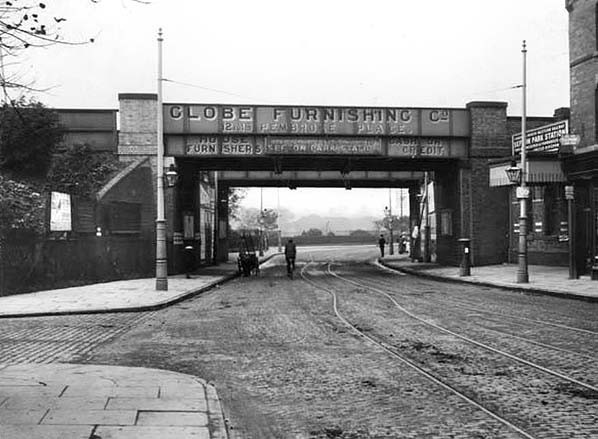
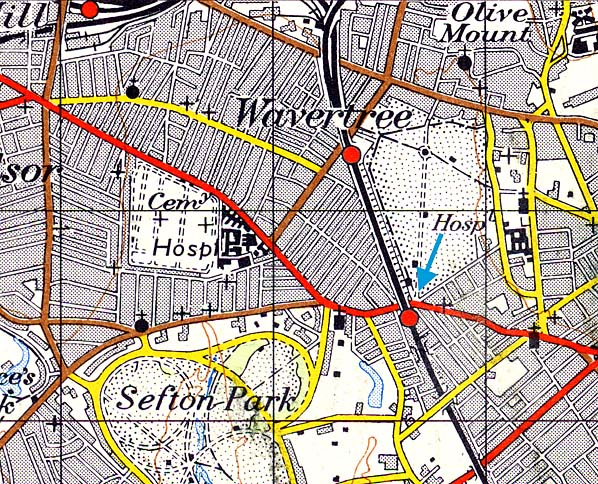
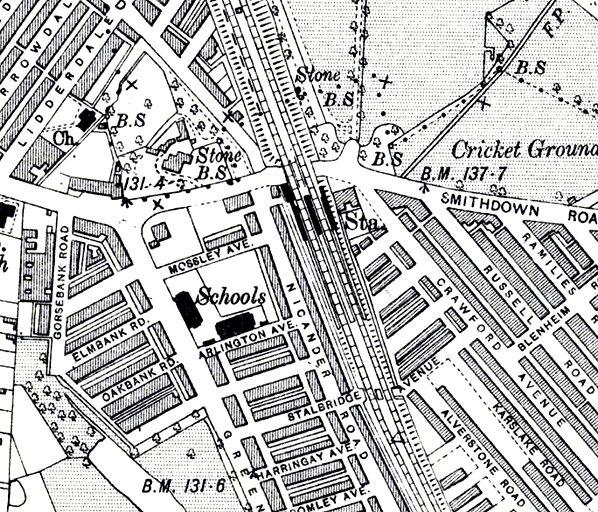
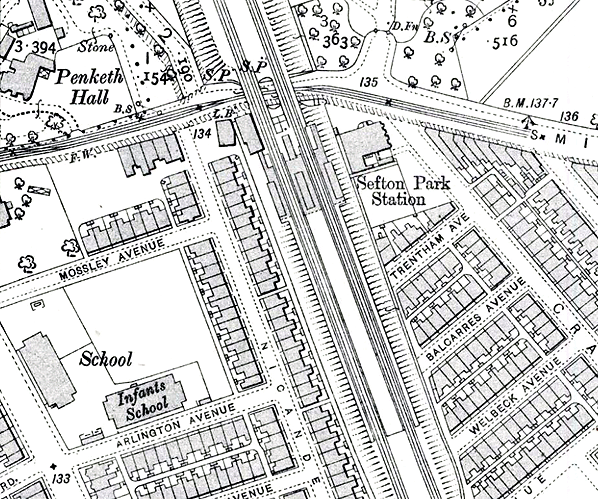
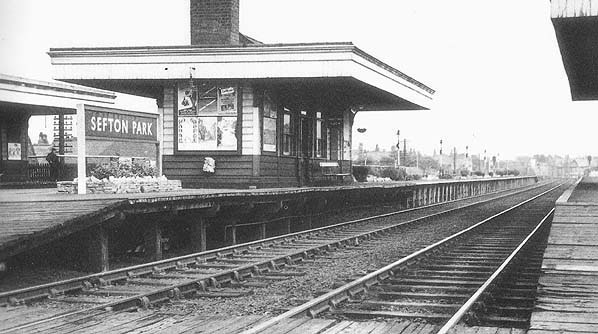
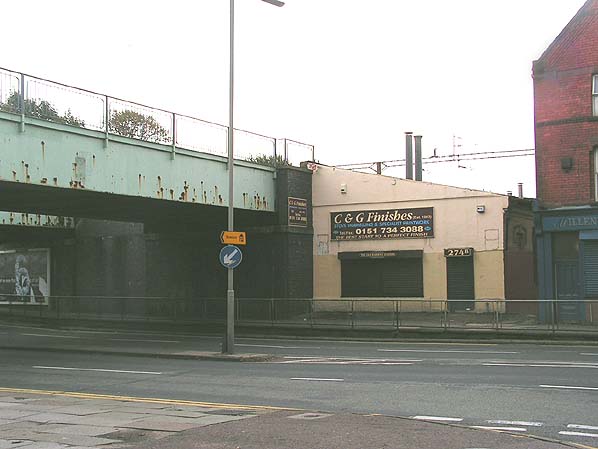
 Home Page
Home Page 
